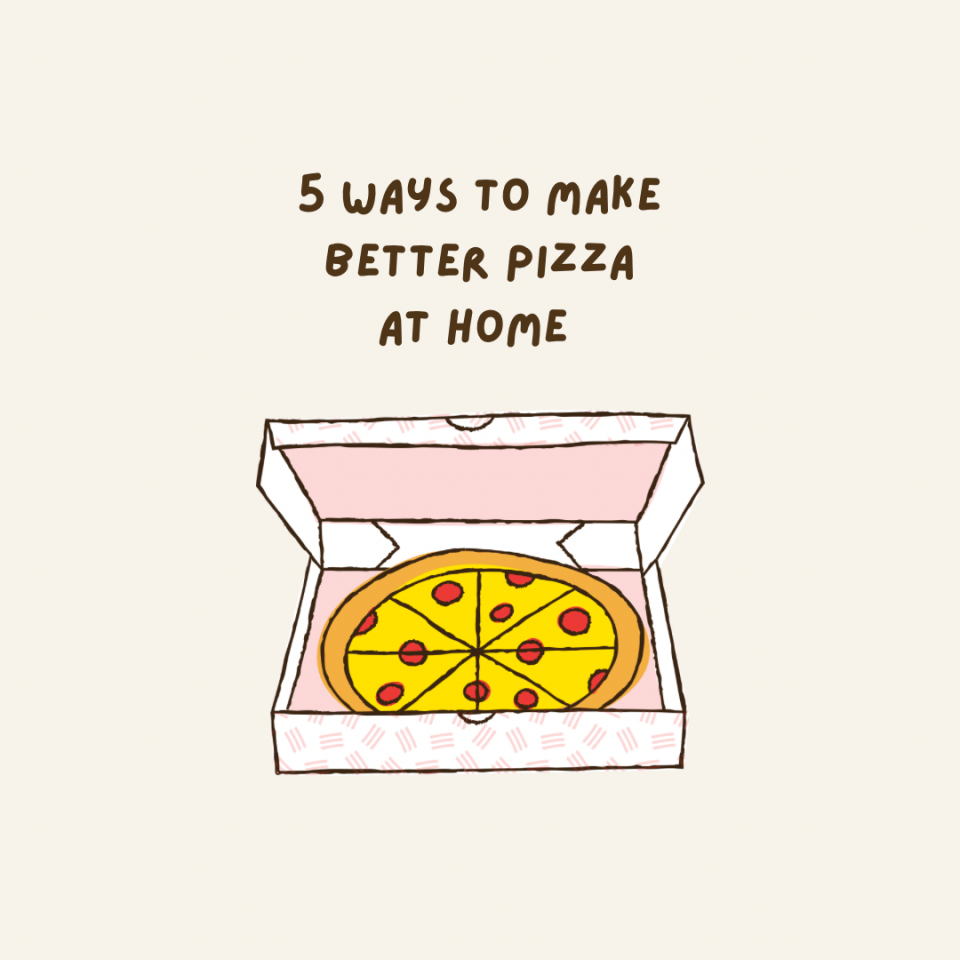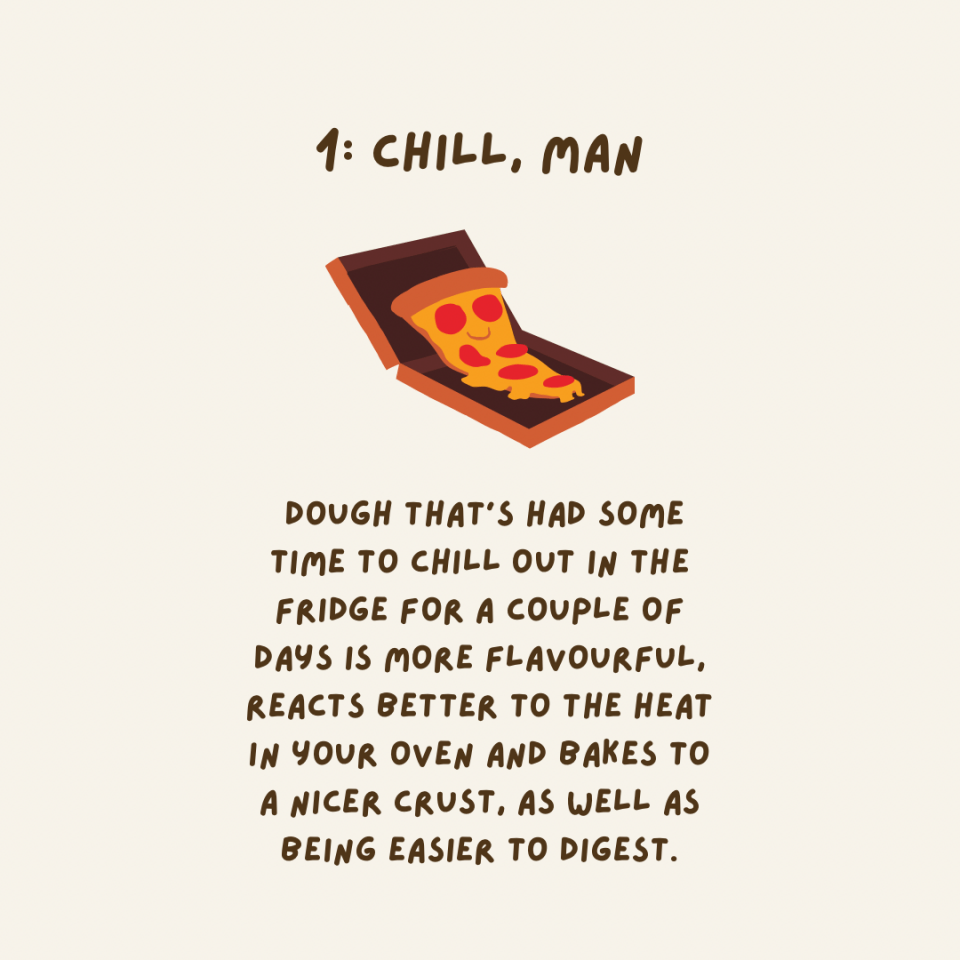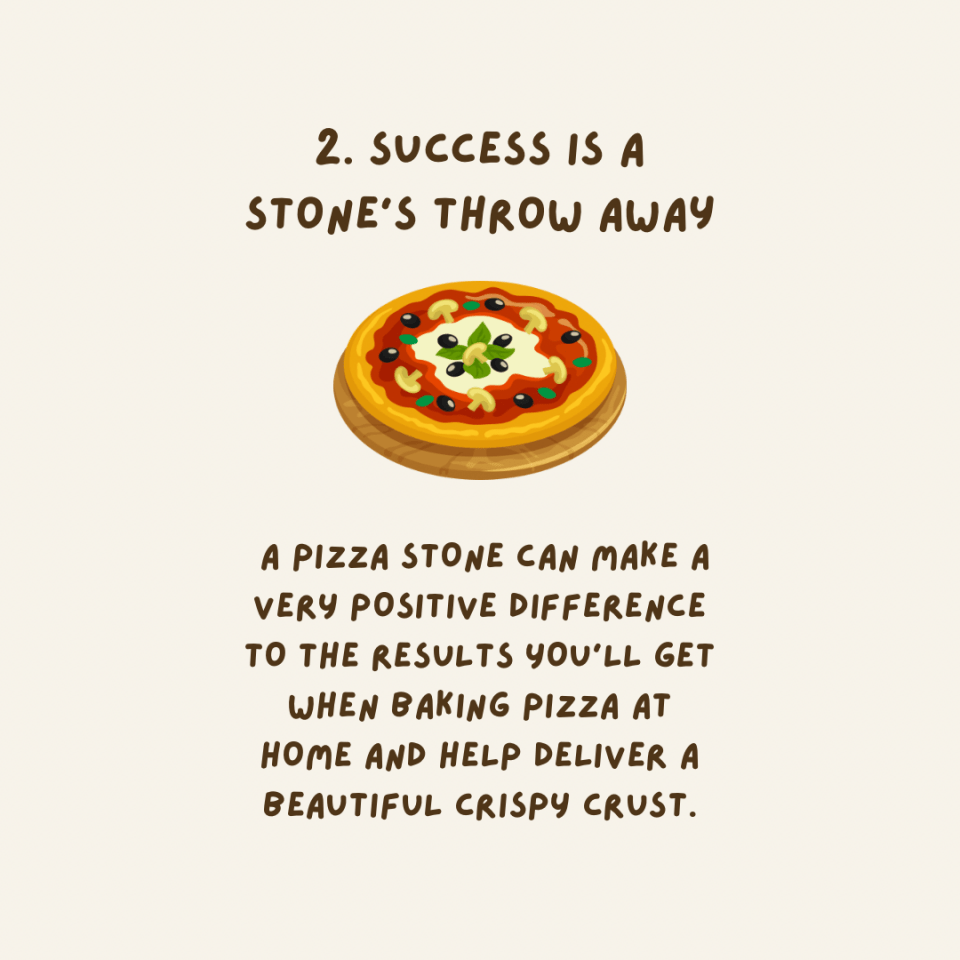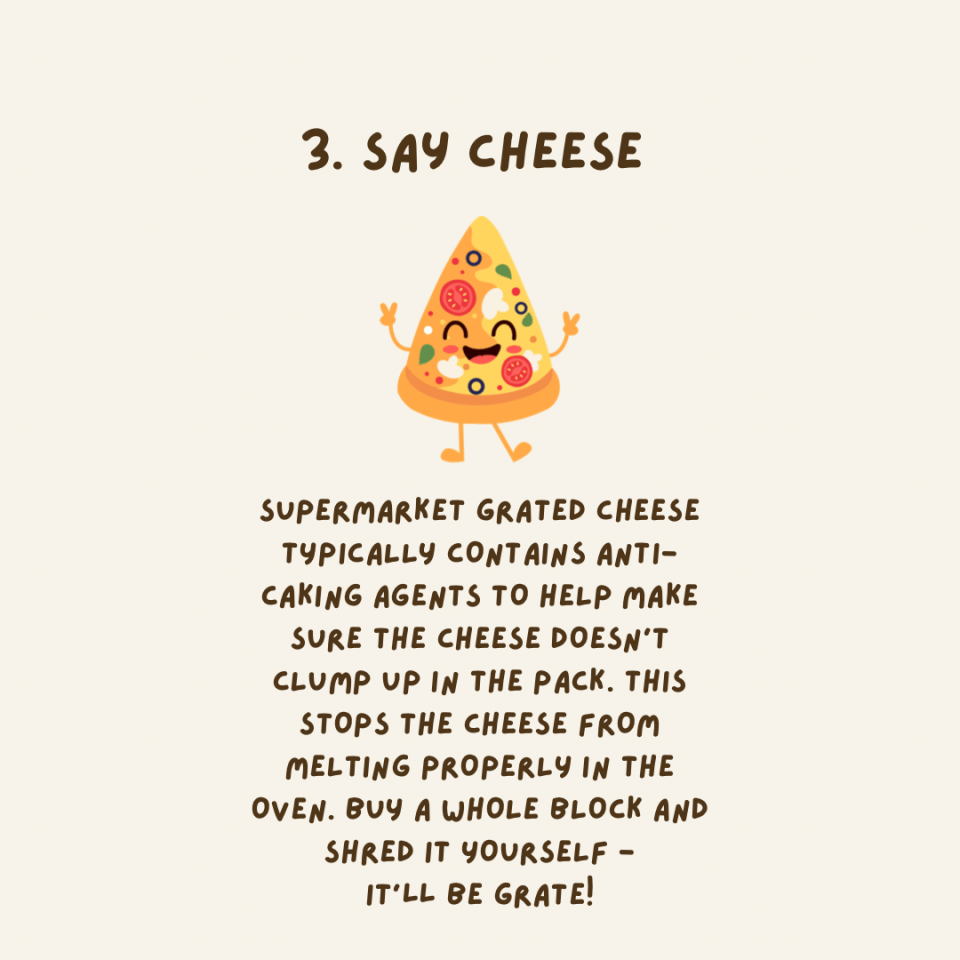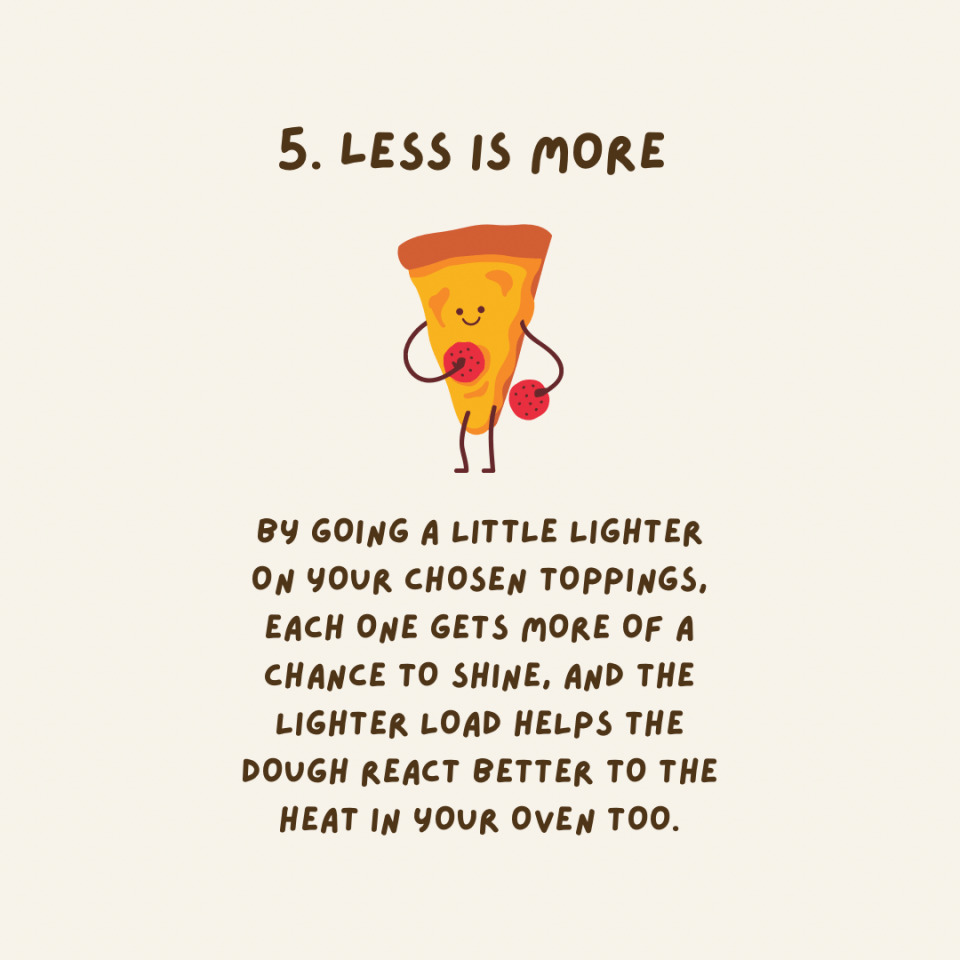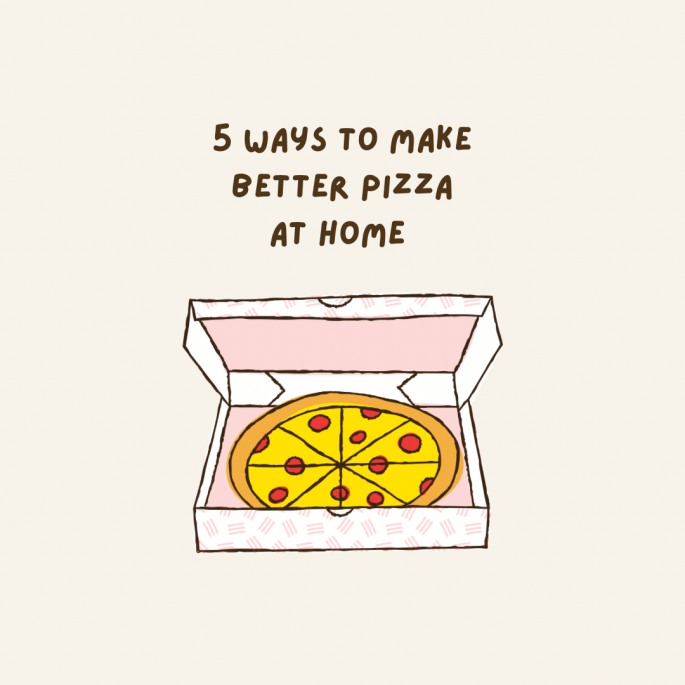A collection of recipes, suggested ingredients and tips that will help you make better pizza at home! If you’d like to make takeaway style pizza, this guide is for you.
Making pizza at home
Pizza is a great example of simple ingredients combining to make something more than the sum of their parts. As simple and delicious as pizza is, however, there are some obstacles in the way of making takeaway style pizza at home. The primary issue, of course, is that in a domestic oven the temperatures just aren’t hot enough to rival real pizza ovens. But, do not fear! With some good dough, a nice pizza sauce and a few simple steps, we can make better pizza at home.
This guide refers to dough and sauce recipes that result in something of a cross between NYC style pizza and Neapolitan style. But, the recommended ingredients and tools will be useful for any style of pizza you choose!
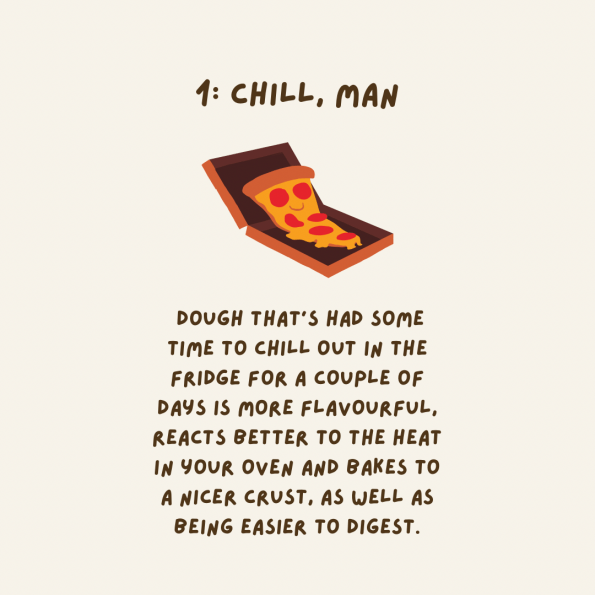
1: Chill, Man
Whilst it’s possible to make pizza dough and use it on the same day, make your pizza dough in advance and the rewards are huge. This one step will help you make better pizza at home. Dough that’s had some time to chill out in the fridge for a couple of days is more flavourful, reacts better to the heat in your oven and bakes to a nicer crust. It is also easier to digest.
Make ahead
I’ve come to find that this requirement for forward planning actually makes the pizza making process easier, allowing a head start on proceedings. Dough made with lower yeast and set aside in the fridge is really good after two or three days, but even making the dough one day before you bake will be worthwhile. I’ve used dough as long as five days after making it with good results. This means you have a lot of leeway when it comes to choosing when to turn your dough into pizza.
Recipe: 2-3 Day Pizza Dough
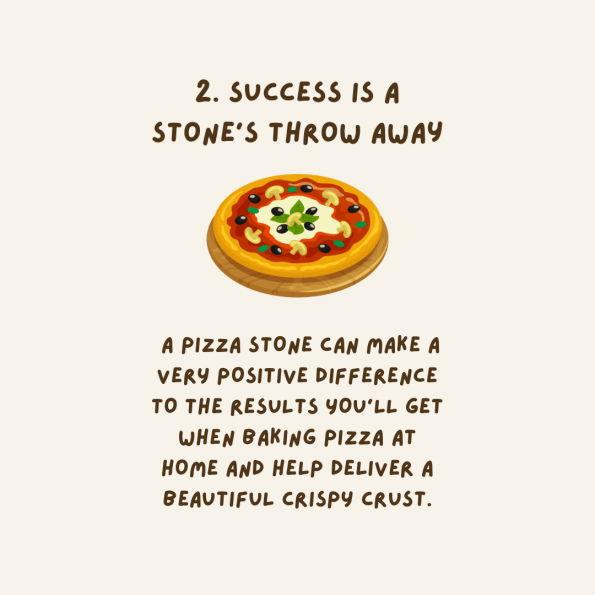
2: Success is a Stone’s Throw Away
Home kitchen ovens typically reach temperatures of around 240C. This falls a long way short of the sort of heat commercial pizza ovens or wood burning ovens can achieve (500C). It is this intense heat that makes the dough puff up and bake quickly, offering crisp texture and the perfect chew. When making pizza at home, it’s easy to find that the toppings and cheese on your pizza are overcooking whilst your dough is still pale and underbaked.
I’m particularly fussy about the crust on the sort of pizza I like (ideally verging on burnt). For this reason I experimented with various solutions in order to try to add more colour and char to the crust. Part-baking the dough without toppings wasn’t good, and although sliding the pizza on to a hot, dry frying pan after baking does help to crisp up the base a little, it’s more of an aesthetic solution than one which actually impacts on how well the dough has baked in the oven.
A pizza stone is a great inexpensive option to help make better pizza at home
The best option for a home oven then, is to invest in a pizza stone. These are relatively inexpensive, but do require preheating to be of any benefit. This means you’ll have to be prepared to have your oven on for 45-60 minutes before baking. When preheated though, a pizza stone can make a very positive difference to the results you’ll get when baking takeaway style pizza at home. After the stone absorbs heat, it passes that heat immediately to the dough when you begin the bake. This intense heat helps deliver a beautiful crispy crust on the pizza.
One is good, two must be better
So useful is a pizza stone in a regular kitchen oven that I invested in a second stone. Whilst useful for making two pizzas simultaneously, the ultimate use of two pizza stones is in baking just one pizza. With the pizza baking on one stone, the second stone retains all the heat it has absorbed during preheating. Transferring the pizza to the second stone during cooking gives another burst of heat to the base. This results in a properly crispy base the likes of which had been lacking in my takeaway style pizzas for so long.
Equipment: Pizza Stone
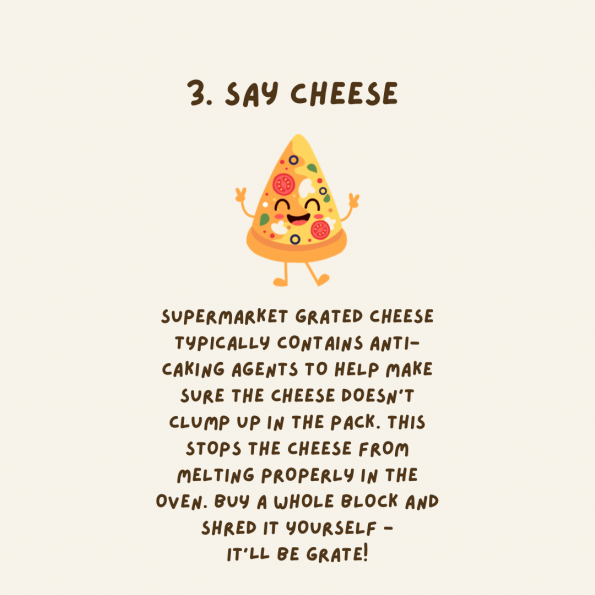
3: Say Cheese
Supermarket packages of grated cheese typically contain anti-caking agents to help make sure the cheese doesn’t clump up in the pack. This added ingredient stops the cheese from melting properly in the oven. Instead of buying grated cheese, I use a whole block low moisture mozzarella cheese. After cutting it into tiny cubes, it melts perfectly and the results are so much better. Mozzarella cheese freezes well, so you can cut a large block into portions, wrap individually and freeze.
If whole block mozzarella isn’t available
If you can’t buy whole block mozzarella and have to rely on what’s typically available in supermarkets, I’d recommend both grated mozzarella and fresh mozzarella (the kind that comes in a plastic pouch suspended in liquid). The added moisture from the wet mozzarella will help prevent the starchy grated cheese from making the pizza too dry. This combination of mozzarella cheeses will definitely help you make better pizza at home.
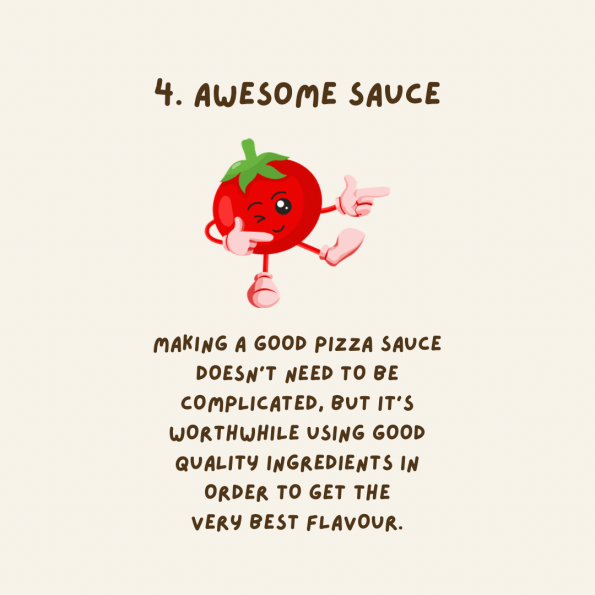
4: Awesome Sauce
Making good pizza sauce doesn’t need to be complicated, but it’s worthwhile using quality ingredients to get the best flavour. Whilst supermarket pizza or pasta sauces will work, a simple sauce made with good tomatoes can be made in minutes. I like Cirio brand crushed tomatoes (Passata Rustica) for this. Pizza sauce can also be used to make simple tomato pasta dishes or used as a dipping sauce with breadsticks.
Recipe: Simple Pizza Sauce
Ingredient: Cirio Crushed Tomatoes (Passata Rustica)
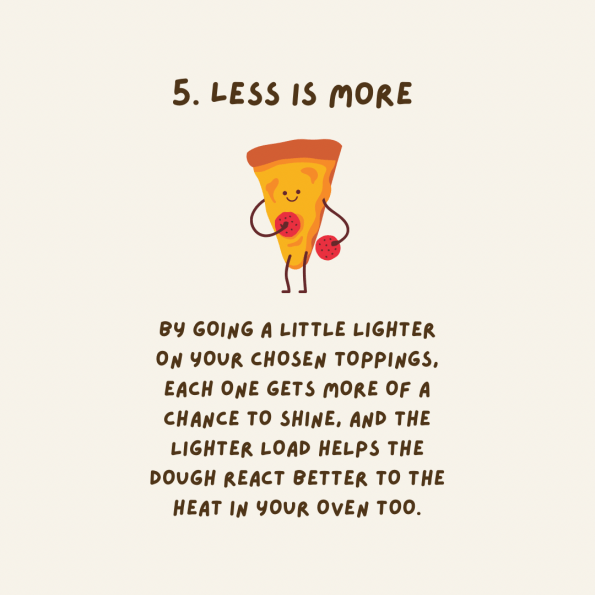
5: Less Is More
After going to the effort of making your own dough, filling your oven with pizza stones and changing your cheese supplier, it’s easy to go overboard with toppings. Instead, try to use just enough to let each ingredient stand out. This will also help your dough bake to an even more beautiful crispy crust. Even now, I could do with following this advice a little more myself. By going a little lighter on your chosen toppings, each one gets more of a chance to shine, and the lighter load helps the dough react better to the heat in the oven. All of this makes for better pizza.
Dough : Sauce : Cheese ratio
Per 12″ pizza I typically I use around 75g of sauce, 100g cheese and just a handful of toppings. One exception to this is the classic pepperoni pizza which should be made with a generous amount of good pepperoni.
I hope some of these tips will help you make better pizza at home. Let me know in the comments below how your pizza making goes!
